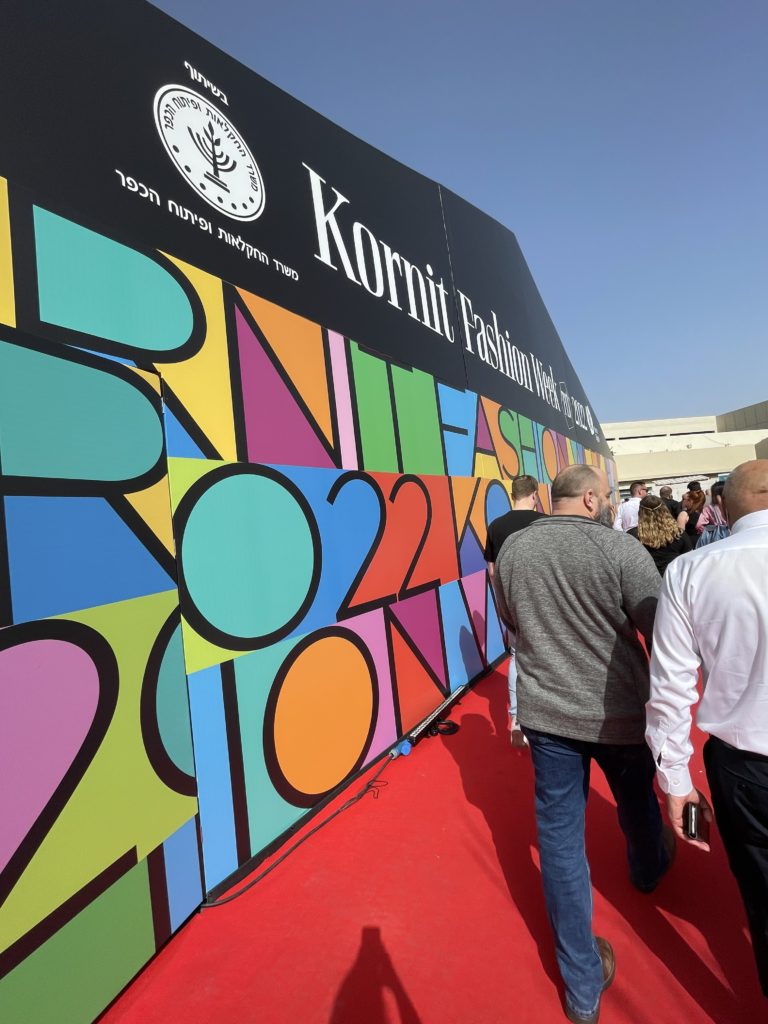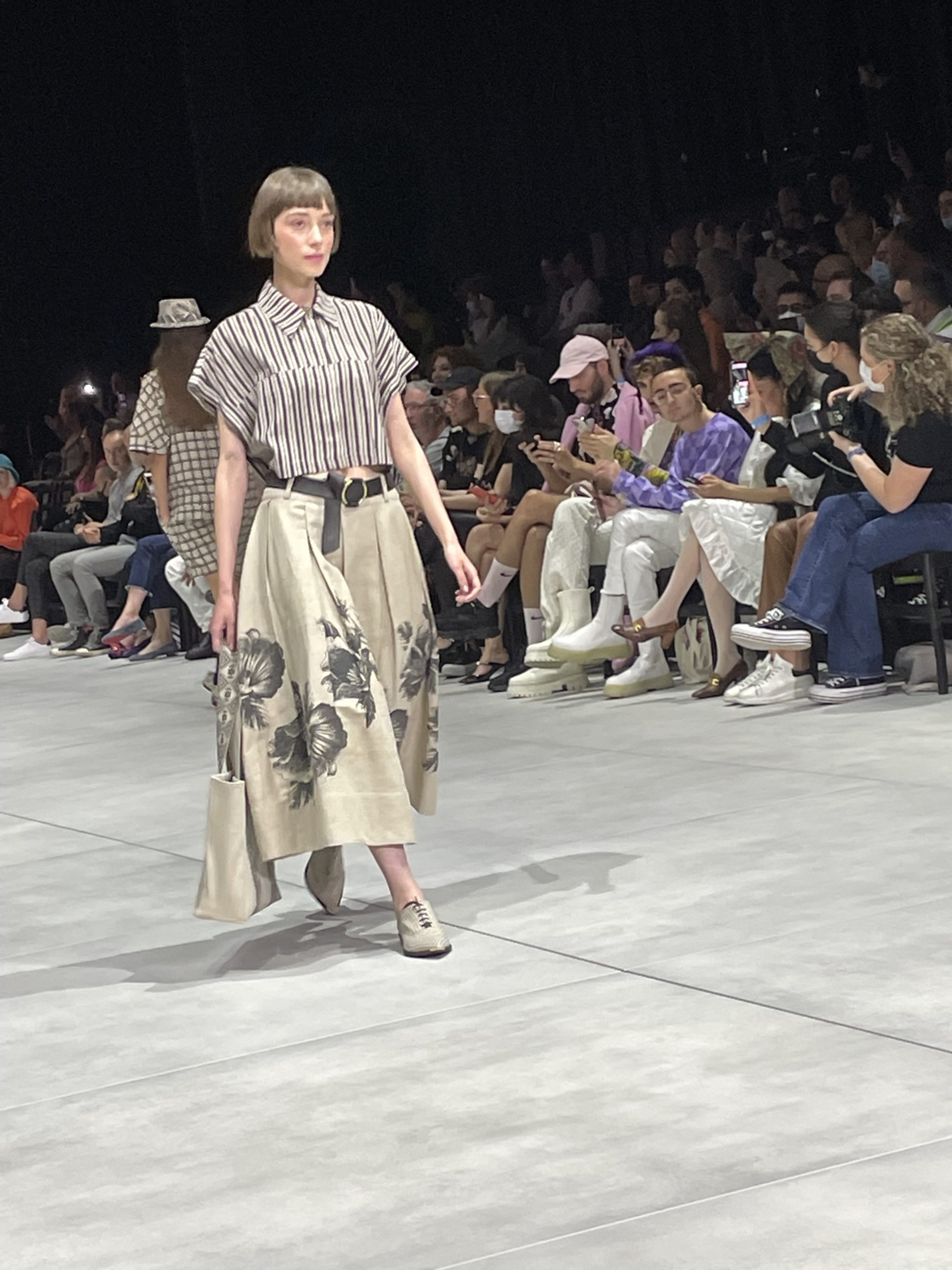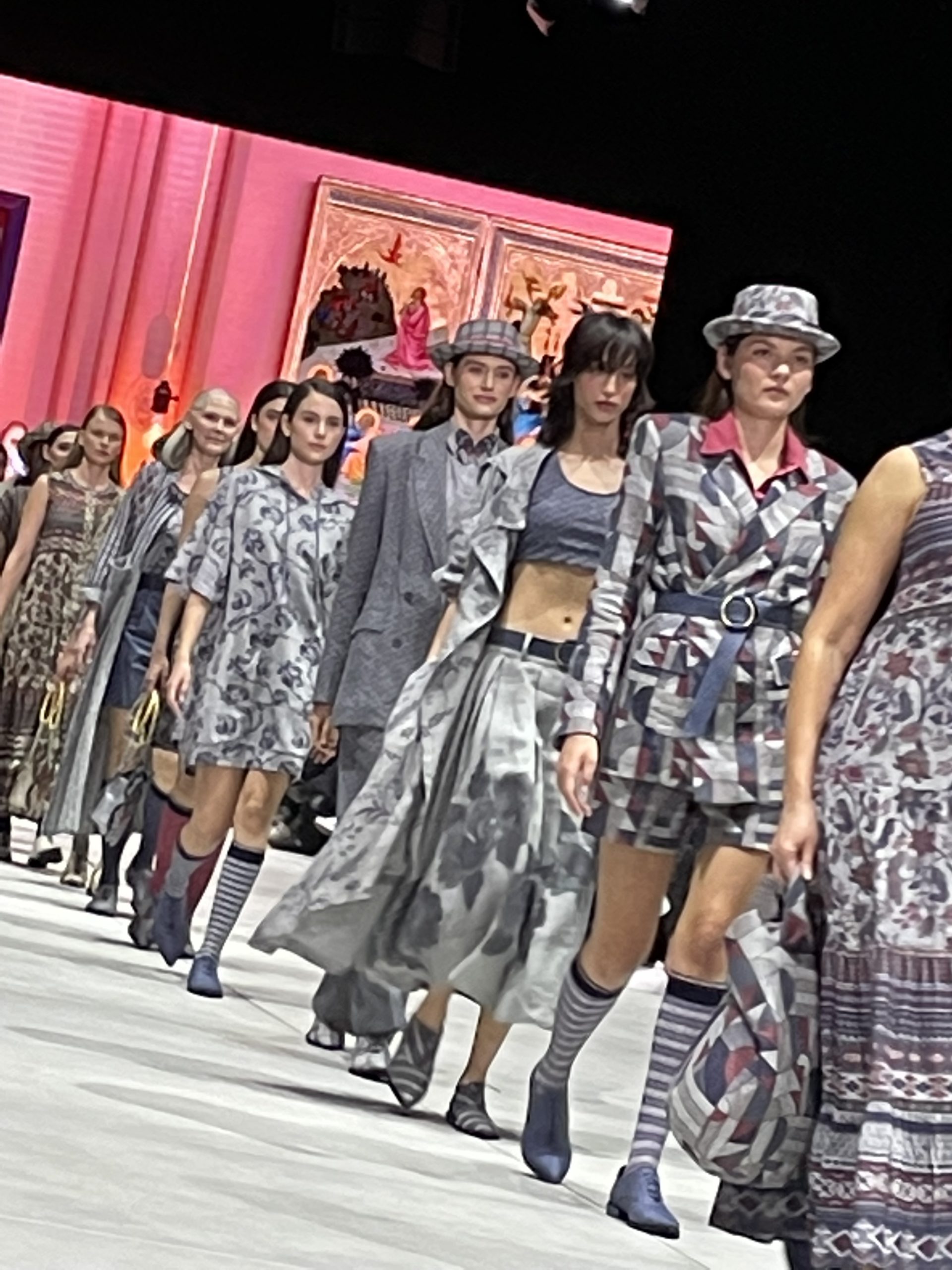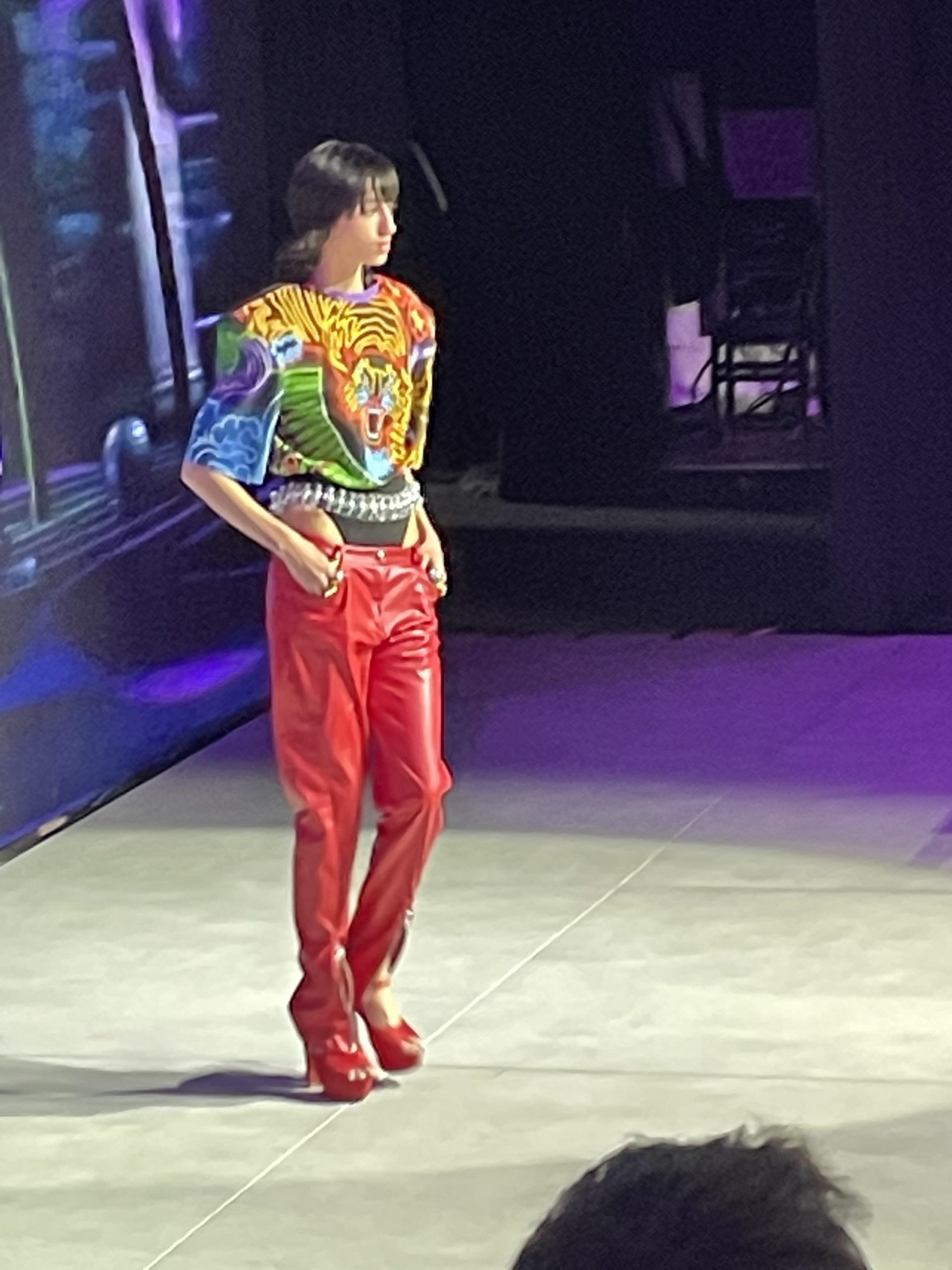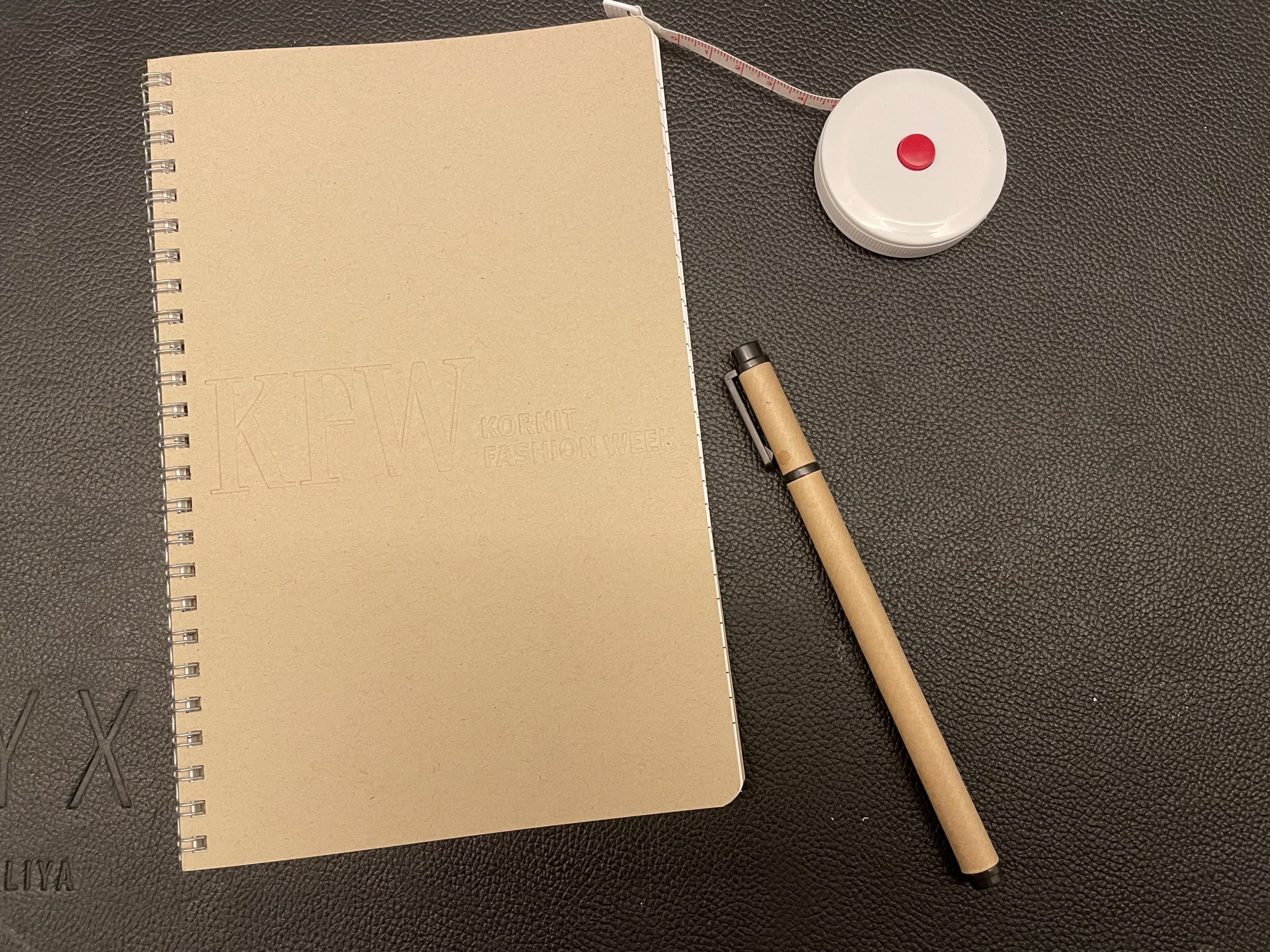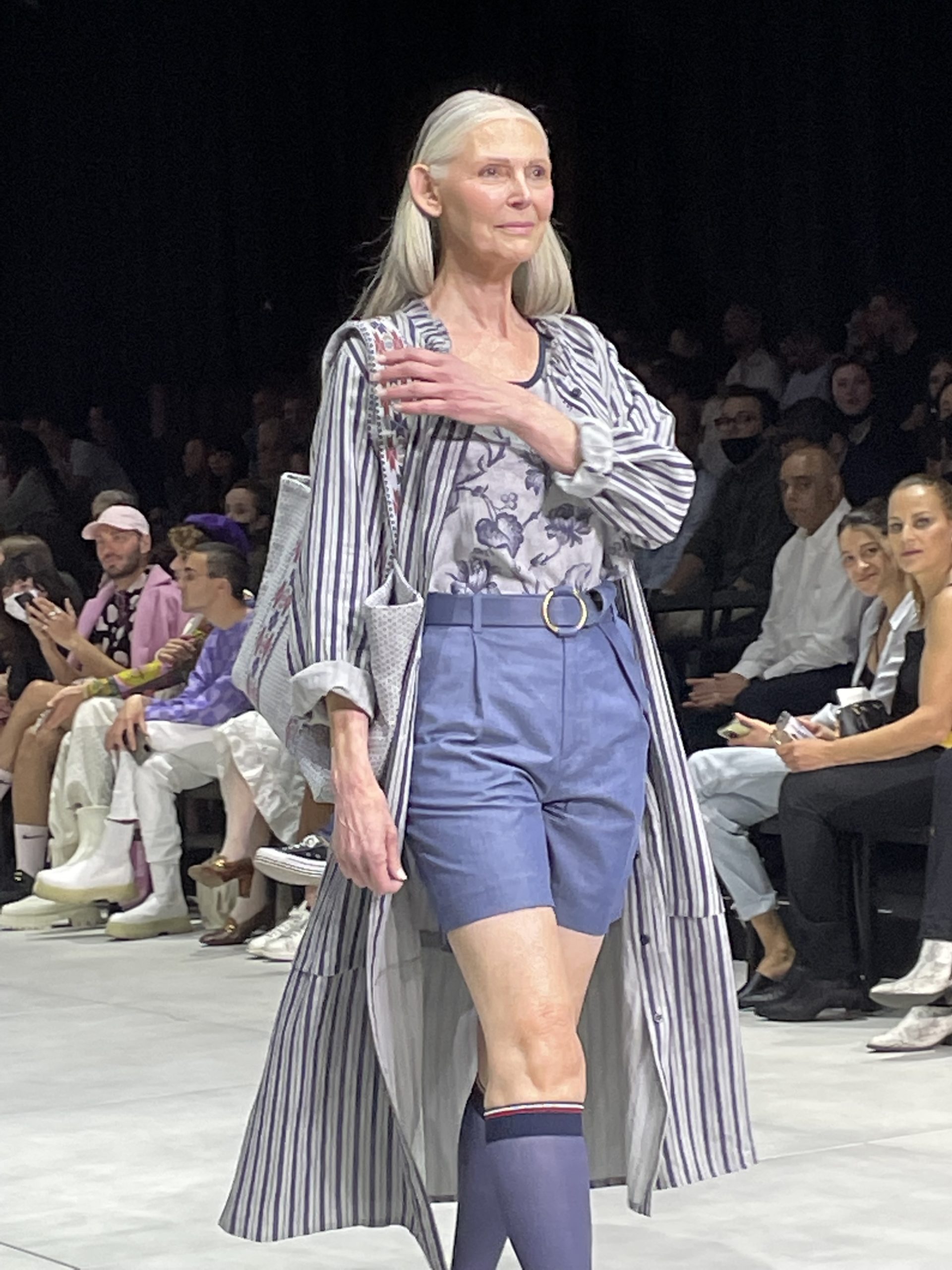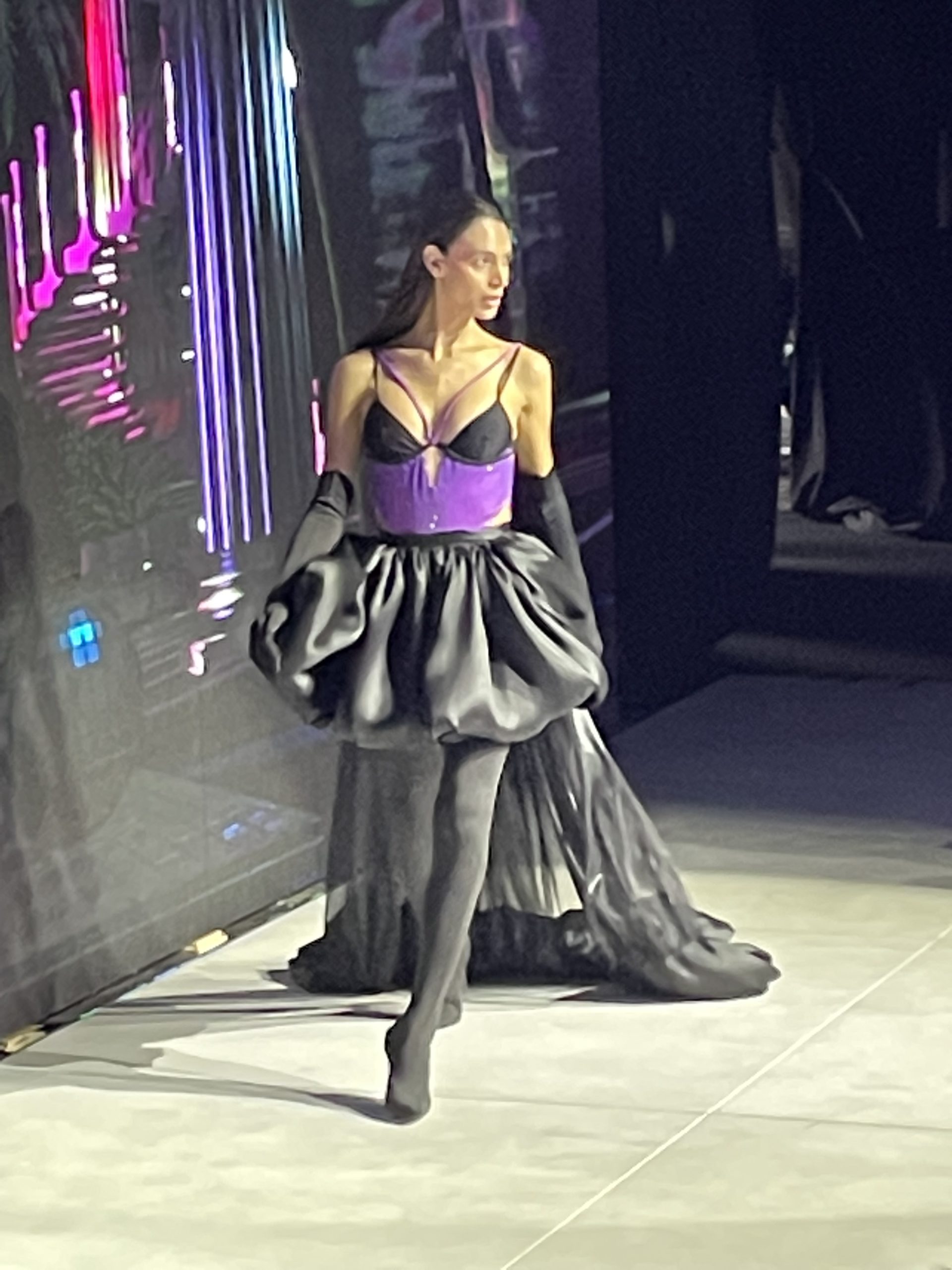Fashion is one of the world’s most polluted industries, as Ronen Samuel, CEO of Kornit Digital (NASDAQ: KRNT), said at Kornit Fashion Week Tel Aviv 2022. I was lucky enough to be at the event in Israel when he said this, as I was invited by Kornit, alongside investors, partners, customers, and other journalists when the company unveiled its Kornit Atlas MAX Poly and Kornit Apollo solutions for digital, sustainable fashion. The theme of the whirlwind week was “Witness the Future.” I really felt like I was, as the focus was on changing the fashion and textiles industry to produce far less waste, while still maintaining flexibility to celebrate one’s own identity.
A little background: Kornit specializes in on-demand textile production, and its technology, called direct-to-garment (DTG) printing, basically applies digital printing to textiles. Kornit systems use inkjet printheads to deposit color onto fabric, starting with white ink to achieve full color on dark garments. The company’s MAX technology, and its XDi feature, deposits 3D layers, and embeds 3D objects, onto fabrics. It looks a lot like embroidery or screen printing, but it’s a single additive process. Kornit also offers a single-step, direct-to-fabric (DTF) printing solution for textiles as well, and both are meant to be more sustainable.
In 2020, Kornit acquired cloud-based software workflow solutions provider Custom Gateway. Last year, 3DPrint.com’s Editor in Chief Michael Molitch-Hou noted that the closest competing technology to Kornit’s XDi was by Voxel8. Just a few months later, Kornit purchased Voxel8, nipping that problem in the bud. This winter, the company acquired Tesoma, which specializes in textile drying and curing machinery that now drives the new Kornit Apollo. As Robert Zoch, Global Content Manager at Kornit Digital, told event attendees, the hardware acquisitions make its technology possible, while the software acquisitions make it accessible.
These acquisitions helped Kornit achieve strong system sales and a record $87.5 million revenue for the fourth quarter of 2021. So, the company entered 2022 with a very strong backlog and even more visibility, putting it in a great position ahead of its exciting announcements.
Before we got to see Kornit’s latest technology for ourselves, we saw the results in two exciting fashion shows at Hangar 11, an entertainment and event venue in the port of Tel Aviv. Fashion Week was already in full swing by the time my group got on the scene. Our arrival was timed to see two fashion collections that were, as Samuel told the crowd, “based 100% on Kornit’s technology,” specifically the Kornit Presto MAX, and made in Israel by one of the company’s partners.

The Sigal Dekel collection. © FASHION WEEK TEL-AVIV | PHOTOS BY @IDOCVM
First up was Israeli fashion designer Sigal Dekel with a beautiful collection of clothing that actually looked wearable. The color palette was muted but lovely, with blues, grays, and tans, and frequent pops of pink. I also appreciated that the runway show featured a diverse array of models; we learned later that one of the women was in her 70s!
- Photos courtesy of the author.
A brief cocktail hour was followed by a runway show by Yanky & Nataf, two fashion designers who also happen to be married.

The Israeli singer stands center of the catwalk, flanked by models and disco balls. © FASHION WEEK TEL-AVIV | PHOTOS BY @IDOCVM
This collection was the polar opposite of the first, with bright, shiny colors galore. There were literal disco balls on the runway, and the show opened with a performance by a talented Israeli singer, who stayed to sing on the runway while the models strutted around him.

© FASHION WEEK TEL-AVIV | PHOTOS BY @IDOCVM
- Photos courtesy of the author.
The whole time, I felt like I was on an episode of Project Runway, and I loved it. Our shuttle buses then came and whisked us all away to the non-profit Peres Center for Peace & Innovation, another one of Kornit’s new partners. In addition to enjoying dinner, drinks, and conversation, we were all given a tour of the center, which develops and implements unique programs and celebrates the many innovations born in Israel—including Kornit’s sustainable fashion technology.
The next morning, we went to Kornit headquarters in Rosh HaAyin, where about 500 employees work. When we arrived, we had the chance to grab some coffee and breakfast before sitting down for a morning of presentations and demonstrations.
“While the fashion industry is really fun, it’s also really harmful,” Samuel said, after a brief video on the true ecological cost of manufacturing clothing.
Samuel, who was wearing a jacket with white ink produced on Kornit’s Presto Max printer, went on to say that, for every screen printed shirt today, thousands more are made in the same batch. But many of those thousands of shirts aren’t worn, and end up as yet another waste product. These large quantities are produced to address next season’s consumers, which makes absolutely no sense from a sustainability perspective, but is unfortunately how the fashion industry has been run for many years. Samuel also noted that 28 trillion liters of water are used to produce shirts, and 40% of produced clothing goes to the landfill.
“We developed technology to print textiles more sustainably, which puts quality and efficiency before mass quantity,” Samuel said.
The supply chain is also “really broken.” We all remember what happened in the Suez Canal last year, and, unfortunately, this will continue to be an issue. As a result, there’s been a shift to more onshore and nearshore production, which is causing the behavior of brands and retailers to change. But it’s not just because ships can’t get from Point A to Point B. The larger reason is that people are moving more towards the digital world. While we used to consume fashion through magazines (I remember how excited I was in middle school for my dELiA*s catalogue to arrive), today we watch influencers on social media, and rely more on e-commerce.
Samuel said the virtual experience in fashion will also influence this evolution, as people will likely buy more clothes online. He also suggested that Kornit’s “on-demand sustainable proximity production” is the way to “connect the virtual to the physical.”
The idea is that, if you’re shopping for clothing online, you can get any color or type of image without having to manufacture thousands of the same item. There’s no inventory sitting around taking up space. Once an order is placed, it’s routed to a fulfiller close to the consumer. In this way, garments can be customized and personalized, but with equal amounts of consistency and quality.
Another way to connect the physical world to the virtual one is with augmented reality. Using an iPad, Samuel showed us how an employee’s Kornit-made shirt, featuring David Bowie and a QR code, could be scanned and take you to a virtual experience, like a video of Bowie performing.
It often takes over 18 months to launch fashion collections. However, Samuel said the two collections we’d seen the day before were created and launched in just one month with Kornit’s technology. The company has held fashion shows in Milan and Los Angeles, and will soon host another in London, “to show people that they can unleash their creativity in a sustainable way.”
Kornit is focusing on the production floor, connecting the virtual and physical worlds through KornitX business solutions, automation, and the virtual world itself, i.e., working with NFTs. Customer testing has already begun for the automated Apollo system, which was designed for mass customized production and should be available next year. Kornit has 1,300 customers around the world that could benefit from the platform, which Samuel said can produce 400 black t-shirts with white ink in one hour, “the highest productivity available today in the digital world.”
He also described KornitX, which goes from “pixel to parcel” to connect the demand to the supply. According to the website, KornitX helps brands, fulfillers, and licensors move to on-demand fashion by providing the tools with which to generate more revenue and update the supply chain.
Kornit hopes to become the operating system of the fashion industry for sustainable, on-demand production. The company also recently released its impact report, and promised that, by 2026, it will save 4.3 trillion liters of water. Finally, Kornit wants to bring diversity and inclusivity to the runway and send a message that “beautiful is not one-size-fits-all.”
Stay tuned for more about my visit to Israel…until then, take a look at some more of my pictures from Kornit Fashion Week Tel Aviv 2022 below:
Feature image © FASHION WEEK TEL-AVIV | PHOTOS BY @IDOCVM
Subscribe to Our Email Newsletter
Stay up-to-date on all the latest news from the 3D printing industry and receive information and offers from third party vendors.
You May Also Like
3D Printing Financials: Fathom Struggles in Financial Quicksand During Critical Transition
Facing a year of key transitions and financial pressures, Fathom (Nasdaq: FTHM) has filed its annual report for 2023 with the U.S. Securities and Exchange Commission (SEC). The document outlines...
Latest Earnings Overview for Australian 3D Printing Firms Titomic and AML3D
Australian 3D printing manufacturing firms Titomic (ASX: TTT) and AML3D (ASX: AL3) reported their financial results for the period from July to December 2023, marking the first half of their...
3D Printing Webinar and Event Roundup: April 7, 2024
Webinars and events in the 3D printing industry are picking back up this week! Sea-Air-Space is coming to Maryland, and SAE International is sponsoring a 3D Systems webinar about 3D...
3D Printing Financials: Unpacking Farsoon and BLT’s 2023 Performance
In the Chinese 3D printing industry, two companies, Farsoon (SHA: 688433) and Bright Laser Technologies, or BLT (SHA: 688333), have recently unveiled their full-year earnings for 2023. Farsoon reported increases...


